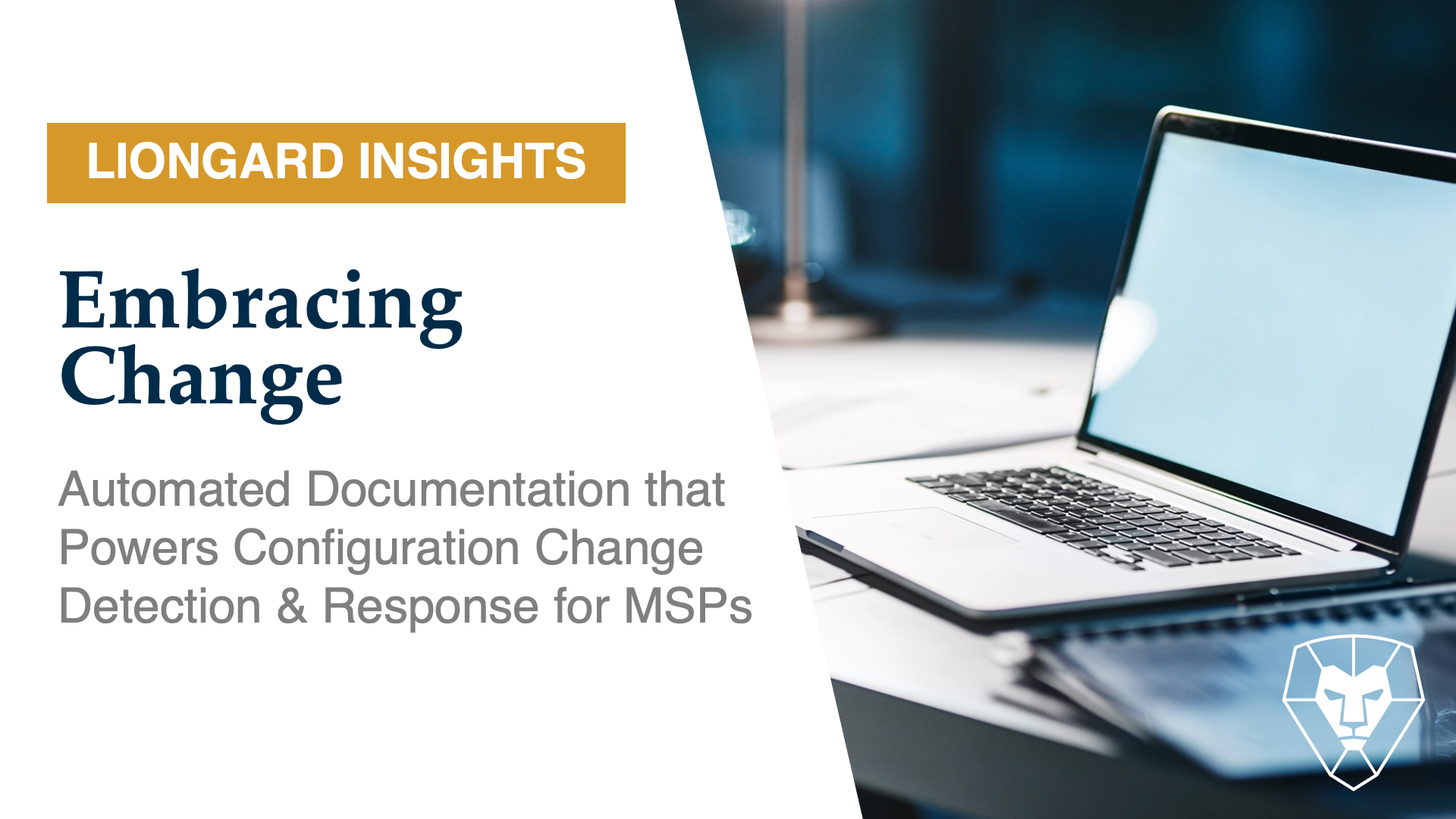
In the fast-paced adoption of digital transformation, Managed Service Providers (MSPs) continually grapple with a rapidly evolving landscape. Managing and documenting client networks, configurations, devices, and more efficiently has become paramount. The key to mastering this? Automated documentation with Liongard, which enables comprehensive change detection and management.
Leveraging Automated Documentation for Powerful Change Detection and Management
Automated documentation is far more than a time-saving tool. It paves the way for systematic and accurate recording of critical data, eliminating manual effort, and maintaining consistent, up-to-date documentation. Its ability to compare ‘before’ and ‘after’ configuration states consistently offers unprecedented visibility into system changes.
For MSPs, automated documentation becomes a cornerstone for change detection and management. The benefits are three-fold:
- Understanding the Past (What a configuration was): MSPs can efficiently revert to previous configurations for recovery and remediation purposes with automated documentation. For instance, it’s invaluable when you need to rebuild a firewall, recover its rules, or revert accidentally altered DNS settings. This remediation work becomes less daunting with accurate historical data at your disposal.
- Navigating the Present (What a configuration currently is): Automated documentation offers an audit trail of the current system state, facilitating quick diagnostics and addressing customer queries. By comparing it with past data, MSPs can answer critical questions like, “What changed?” Furthermore, it offers defensibility for cyber insurance and provides compliance evidence by tracking changes in a historical log.
- Planning for the Future (What a configuration should be): MSPs can perform cross-customer system assessments and review any configuration drift from desired state with automated documentation and determine what needs to be changed or updated. Proactive work, like patching vulnerable operating systems or renewing domain names, becomes planned and organized work rather than a firefighting exercise.
Liongard: Your Catalyst for Effective Automated Documentation
Liongard is more than a tool—it’s a platform. It revolutionizes how MSPs manage change by leveraging their documentation, and seamlessly track those changes. It continuously updates your documentation tools to keep them current, enriches your PSA Configuration Items and triggers tickets so you can take action on detected changes.
With Liongard, MSPs can reduce manual copy and pasting of configurations, eliminating mistakes, and keeping teams informed without granting system-level access. This not only streamlines operations but also bolsters security by limiting access to sensitive customer systems.
For MSP end users, Liongard delivers timely and accurate evidence for compliance and security. This further underscores its value in preventing accidents, improving service delivery, and providing comprehensive defensibility into change detection and management in the event of an incident or audit.
Success Story: Harnessing Liongard for Real-world Application
A case in point is a large MSP that harnessed Liongard’s capabilities to recover lost firewall configuration data quickly. They efficiently rebuilt the configuration, minimizing downtime. Rather than sifting manually through multiple systems, they channeled all data into Liongard, pushing it to BrightGauge for swift and easy report generation.
Liongard goes beyond simple automation—it revolutionizes IT documentation for MSPs. It enables effective change detection and management, improving productivity, customer service, and compliance. With Liongard, MSPs can thrive in today’s dynamic digital environment.